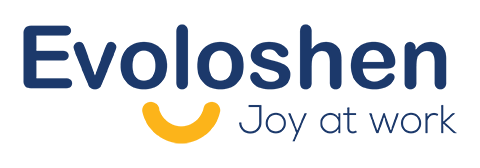
Because we do trainings with hundreds of employees around the topic of trust, I get to hear directly from a lot of people to tap into the pulse of the workplace from top management to the employees. It’s been interesting to hear what themes have been surfacing from our various programs and all the conversations we have with top management teams. The topic of a hybrid workplace is top of mind for many. Often, there is a definitive gap between what management might want to do versus what their people want to do. Here are seven themes that have surfaced:
- Connection is vital – even though many are resistant to come back to the workplace at first, when they do, they tend to be inspired because of the personal connection they got to experience. They haven’t realized how much they may have missed it. Although we are all savvy with all the online platforms now, there is nothing that can replace the eye to eye contact we experience when meeting in person. I believe this is a core human need for all of us! How can you connect face to face on a regular basis?
- Attract don’t force – for employers, it’s important to find ways that will attract their staff to come to the office again. Don’t just make it about work only. Find ways to make the time spent in the office something that people WANT to do, not that they are forced to do. This can be through some fun activities while in the workplace, after work, or finding ways to gamify being in the office. As one CEO told me, make the workplace a place that people want to spend time in. Those in-between interactions during coffee breaks and lunch simply don’t happen virtually nor can they be replaced…and they’ve been missed by many! This will also help in attracting the right talent to the organization. What can you proactively do to make your workplace attractive for employees and candidates?
- Balance is essential – one of the many reasons people don’t want to work 40 hours in the office anymore is the long commutes and enjoying more time to spend with their family. Each person needs to find the right balance for themselves between being productive at work and living their lives. That goes for the hours people work, the way they work, and how they interact with their colleagues. Be clear on expectation and results and let the how be defined by the person doing the work. Giving that decision making to each individual shows that you have a high level of trust for them. Have you asked your team members what would work best for their situation?
- Flexibility is necessary – related to finding the right balance is having the flexibility. We are moving away from the centralized business structures to a more networked structure. Flexible location is becoming much more attractive as people (especially the younger generations) realize they can just as easily work from a remote location (as long as there is a good internet connection!). Allow your people to create the structure that works best for them and their teams. Some have jobs that require onsite presence but the majority of “knowledge workers” do not. People will settle into the types of jobs that work best for them. How much flexibility are you comfortable with having in the workplace?
- Personal Choice is empowering – people want to feel in control of their own lives and make decisions that are best for them. We’ve learned in the last couple of years that we CAN trust our people to perform and get the job done. When the company trusts an employee and gives them the space to make good choices, the rewards for loyalty and dedication are great. And being able to choose what works best for each type of personality makes a difference to that individual. How much choice do people have in your workplace?
- Purpose Driven companies are rising to the top. We are certainly seeing that purpose driven companies have a much easier time both attracting and retaining great people. Leaders who understand the value of their culture and talk about their purpose on a regular basis show that these companies tend to thrive much more nowadays. A clearly communicated purpose is like a lighthouse that will guide the right people to the company—both employees and customers for that matter–and also how to act. How clear is your purpose statement and how often do you use it in communication?
- Develop your people and allow them to grow. We are experiencing a mass exodus of knowledge as the older generations are leaving the workplace and by 2025, 75% of the workforce will be the Gen Y & Gen Z. Many companies are looking to up-skill their current workforce as technology will replace many mundane jobs. Companies that offer development for their employees are more attractive and this will help with recruitment of talent. How are you actively working on developing your staff?
It seems that the hybrid model is here to stay and the majority of companies are trying to find the right balance for them.
Elon Musk recently announced that all employees at Tesla were required to work their min 40 hours on site. It’ll be interesting to see how this “command and control” plays out long-term. Steven M.R. Covey’s new book called Trust and Inspire speaks to the shift in management style moving from authoritarian and controlling towards building trust and inspiring people to reach their full potential.
The question for most managers now, is how happy and connected to the company do their people feel? If the culture of the workplace is strong, this is not a threat. Rather will strengthen the culture and make it much easier to attract top talent and those companies will thrive.






